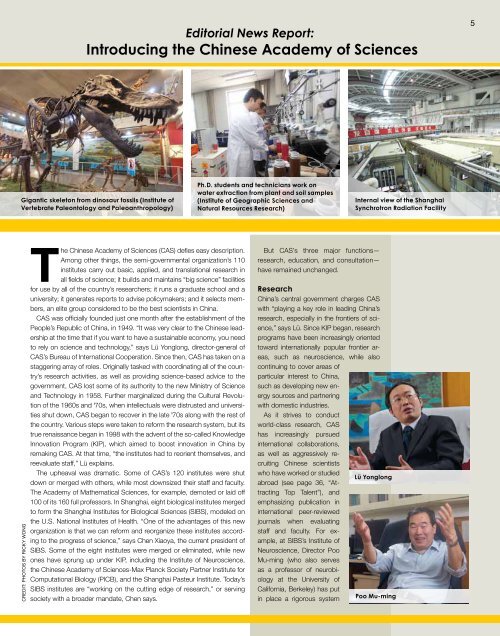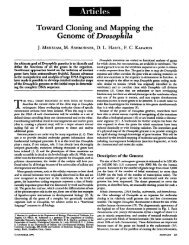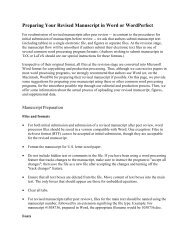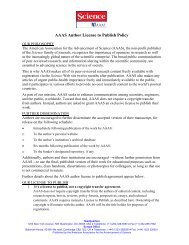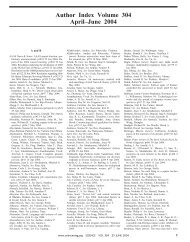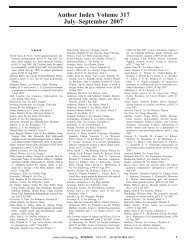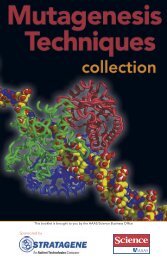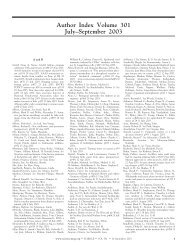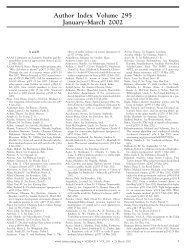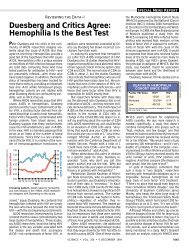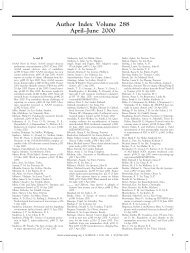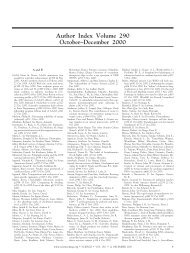Chinese Academy of Sciences (PDF) - low res version
Chinese Academy of Sciences (PDF) - low res version
Chinese Academy of Sciences (PDF) - low res version
You also want an ePaper? Increase the reach of your titles
YUMPU automatically turns print PDFs into web optimized ePapers that Google loves.
Research CAS/In Focus<br />
Editorial News Report:<br />
Introducing the <strong>Chinese</strong> <strong>Academy</strong> <strong>of</strong> <strong>Sciences</strong><br />
Gigantic skeleton from dinosaur fossils (Institute <strong>of</strong><br />
Vertebrate Paleontology and Paleoanthropology)<br />
CREDIT: PHOTOS BY RICKY WONG<br />
The <strong>Chinese</strong> <strong>Academy</strong> <strong>of</strong> <strong>Sciences</strong> (CAS) defies easy description.<br />
Among other things, the semi-governmental organization’s 110<br />
institutes carry out basic, applied, and translational <strong>res</strong>earch in<br />
all fields <strong>of</strong> science; it builds and maintains “big science” facilities<br />
for use by all <strong>of</strong> the country’s <strong>res</strong>earchers; it runs a graduate school and a<br />
university; it generates reports to advise policymakers; and it selects members,<br />
an elite group considered to be the best scientists in China.<br />
CAS was <strong>of</strong>ficially founded just one month after the establishment <strong>of</strong> the<br />
People’s Republic <strong>of</strong> China, in 1949. “It was very clear to the <strong>Chinese</strong> leadership<br />
at the time that if you want to have a sustainable economy, you need<br />
to rely on science and technology,” says Lü Yonglong, director-general <strong>of</strong><br />
CAS’s Bureau <strong>of</strong> International Cooperation. Since then, CAS has taken on a<br />
staggering array <strong>of</strong> roles. Originally tasked with coordinating all <strong>of</strong> the country’s<br />
<strong>res</strong>earch activities, as well as providing science-based advice to the<br />
government, CAS lost some <strong>of</strong> its authority to the new Ministry <strong>of</strong> Science<br />
and Technology in 1958. Further marginalized during the Cultural Revolution<br />
<strong>of</strong> the 1960s and '70s, when intellectuals were distrusted and universities<br />
shut down, CAS began to recover in the late '70s along with the <strong>res</strong>t <strong>of</strong><br />
the country. Various steps were taken to reform the <strong>res</strong>earch system, but its<br />
true renaissance began in 1998 with the advent <strong>of</strong> the so-called Knowledge<br />
Innovation Program (KIP), which aimed to boost innovation in China by<br />
remaking CAS. At that time, “the institutes had to reorient themselves, and<br />
reevaluate staff,” Lü explains.<br />
The upheaval was dramatic. Some <strong>of</strong> CAS’s 120 institutes were shut<br />
down or merged with others, while most downsized their staff and faculty.<br />
The <strong>Academy</strong> <strong>of</strong> Mathematical <strong>Sciences</strong>, for example, demoted or laid <strong>of</strong>f<br />
100 <strong>of</strong> its 160 full pr<strong>of</strong>essors. In Shanghai, eight biological institutes merged<br />
to form the Shanghai Institutes for Biological <strong>Sciences</strong> (SIBS), modeled on<br />
the U.S. National Institutes <strong>of</strong> Health. “One <strong>of</strong> the advantages <strong>of</strong> this new<br />
organization is that we can reform and reorganize these institutes according<br />
to the prog<strong>res</strong>s <strong>of</strong> science,” says Chen Xiaoya, the current p<strong>res</strong>ident <strong>of</strong><br />
SIBS. Some <strong>of</strong> the eight institutes were merged or eliminated, while new<br />
ones have sprung up under KIP, including the Institute <strong>of</strong> Neuroscience,<br />
the <strong>Chinese</strong> <strong>Academy</strong> <strong>of</strong> <strong>Sciences</strong>-Max Planck Society Partner Institute for<br />
Computational Biology (PICB), and the Shanghai Pasteur Institute. Today’s<br />
SIBS institutes are “working on the cutting edge <strong>of</strong> <strong>res</strong>earch,” or serving<br />
society with a broader mandate, Chen says.<br />
Ph.D. students and technicians work on<br />
water extraction from plant and soil samples<br />
(Institute <strong>of</strong> Geographic <strong>Sciences</strong> and<br />
Natural Resources Research)<br />
But CAS’s three major functions—<br />
<strong>res</strong>earch, education, and consultation—<br />
have remained unchanged.<br />
Research<br />
China’s central government charges CAS<br />
with “playing a key role in leading China’s<br />
<strong>res</strong>earch, especially in the frontiers <strong>of</strong> science,”<br />
says Lü. Since KIP began, <strong>res</strong>earch<br />
programs have been increasingly oriented<br />
toward internationally popular frontier areas,<br />
such as neuroscience, while also<br />
continuing to cover areas <strong>of</strong><br />
particular inte<strong>res</strong>t to China,<br />
such as developing new energy<br />
sources and partnering<br />
with domestic industries.<br />
As it strives to conduct<br />
world-class <strong>res</strong>earch, CAS<br />
has increasingly pursued<br />
international collaborations,<br />
as well as agg<strong>res</strong>sively recruiting<br />
<strong>Chinese</strong> scientists<br />
who have worked or studied<br />
abroad (see page 36, “Attracting<br />
Top Talent”), and<br />
emphasizing publication in<br />
international peer-reviewed<br />
Lü Yonglong<br />
journals when evaluating<br />
staff and faculty. For example,<br />
at SIBS’s Institute <strong>of</strong><br />
Neuroscience, Director Poo<br />
Mu-ming (who also serves<br />
as a pr<strong>of</strong>essor <strong>of</strong> neurobiology<br />
at the University <strong>of</strong><br />
California, Berkeley) has put<br />
in place a rigorous system<br />
Poo Mu-ming<br />
Internal view <strong>of</strong> the Shanghai<br />
Synchrotron Radiation Facility<br />
5


